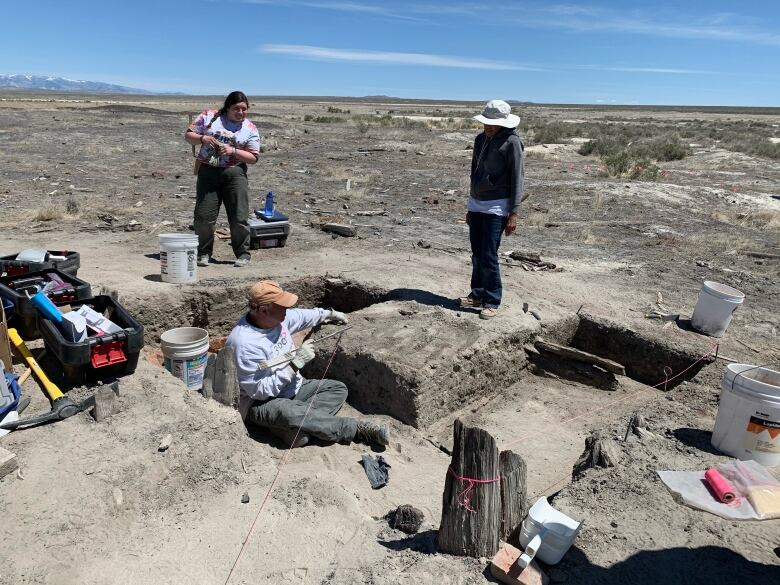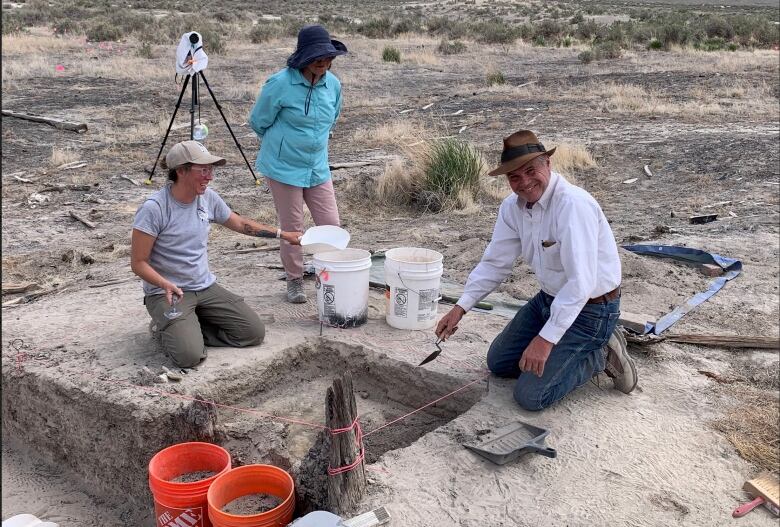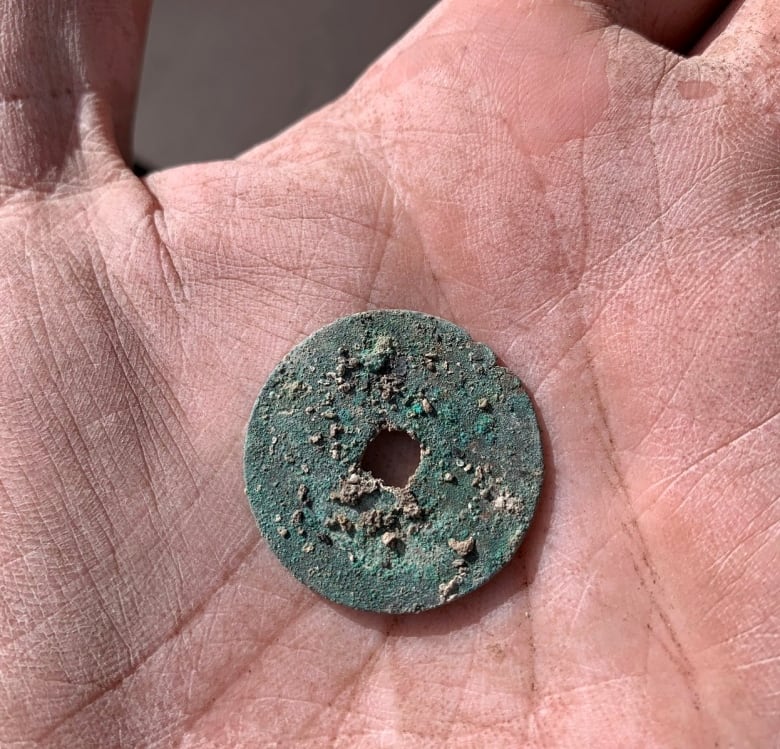Ghost town artifacts reveal home life of Chinese railroad workers | CBC Radio
Archeologist Chris Merritt has been digging through sand dunes in a Utah ghost town alongside the descendents of Chinese railroad workers, uncovering the remnants of a community once occupied by their ancestors 150 years ago.
The team uncovered a small house last month, about three metres wide and two and a half metres long, that could be the first fully-excavated home of Chinese workers who helped build the transcontinental railroad in the United States.
“The artifacts that were recovered really provide a window to the past that we do not get through historical records,” Merritt, who is also the state’s historic preservation officer, told As It Happens host Carol Off.
“[The] records largely excluded them [the Chinese workers] systematically from being documented … so the archeology in this case, through this one house, is actually able to help us convey that lived experience of 150 years ago.”

The archeologist thinks that two to four men lived communally in the small space. They would have stacked their bunk beds together to keep warm in the winter and to stretch their low wages further.
Merritt said that the residents would have probably salvaged extra wood from the railroad, then used it for the redwood and Douglas fir planks that formed the house. With no lumber mills nearby, the timber would have come from the Sierra Nevada Mountains in California.
“Their home is very vernacular, very homespun,” he said. “And then the artifacts that we found within that home really tell us the personal lives of these folks…. Some of the most exciting things that we find are some of the most mundane to others.”
Being able to practice traditional food was [a] way to connect to their home country while they were in this very rural and remote part of Utah.– Archeologist Chris Merritt
Those objects include shards from porcelain bowls, a medicine bottle and a coin that was likely minted in China in the 17th century and may have been kept as a good luck charm. But Merritt focused on the peanut and coconut shells, Chinese melon seeds and even cuttlefish and squid that would have been imported from China.
“Because of the unique soil we have here in the west, the preservation of organic materials has been really dramatic,” he explained.
“You think about how far removed these immigrants were from their home, but being able to practice traditional food was [a] way to connect to their home country while they were in this very rural and remote part of Utah.”
About 13,000 Chinese workers helped build the first transcontinental railroad in North America for the Central Pacific Railroad company in the United States. In 1869, they finished laying the tracks and the company formed the town of Terrace as an operations base along the route.
Many workers went on to build their homes in Terrace. According to Merritt, even though they were paid low wages, life in town as construction workers gave them the opportunity to support themselves and their families in China.

Merritt thinks that railroad workers would’ve occupied the house for about 30 years.
“We have some census records of how many [people] were there, but we have no maps,” Merritt said. “We have no photos of Chinatown. We have no oral histories of the Chinese workers that lived there to help us reconstruct this community. And so the archeology is able to tell us a lot about their lives that has been omitted from those history books.”
He thinks there are about 20 to 30 more houses in Terrace’s Chinatown to be uncovered. The area was located across the railroad tracks, behind the industrial works and away from the rest of town of Terrace.
Merritt said the physical segregation would have been a representation of the social segregation in Terrace between the white community and Chinese workers.

In order to protect and preserve the history uncovered at the site, Merritt is working with the Chinese Railroad Workers Descendants Association to uncover more about their ancestors. He says the descendants are key to “making sure that we’re not looking through the lens of a middle class white American.”
“We’re taking our orders from them,” Merritt said. “They’re the ones who pushed us to go out and do this excavation, because they saw their history being removed.”
The descendants even camped out in the dunes with Merritt’s team and worked side-by-side to excavate the house.
“That, to me, is meaningful archeology,” he said. “We’re working directly with the descendant community … in collaboration, not dictation.”
Written by Mehek Mazhar. Interview with Chris Merritt produced by Chris Trowbridge.
For all the latest Technology News Click Here

